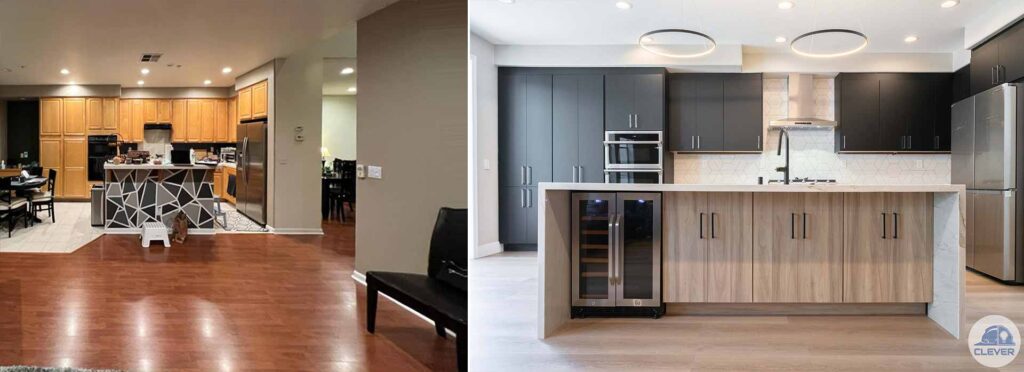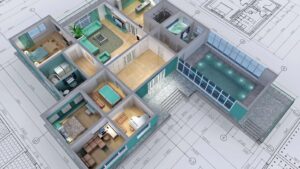Creating their “dream kitchen” is the ultimate goal for most homeowners, making it one of the most popular home remodeling projects.
In fact, according to a recent article from the National Kitchen and Bath Association, approximately 10% of homeowners undertake a significant kitchen renovation each year.
Are you dreaming of a functional kitchen island or ready to splurge on custom cabinets?
Wherever you decide to splurge or save, you cannot start any kitchen remodeling project, minor or major, without first crunching the numbers to gain a clear image of the average cost of a kitchen remodel in the Bay Area.
Luckily, you have the team at Clever Design & Remodeling on your side, and we have done the homework for you!
If you are ready to get started and work with the Best Redwood Kitchen Remodelers, enjoy this comprehensive breakdown of everything you need to know about transforming your drab, outdated kitchen into the breathtaking, functional focal point of your home through a budget-friendly, mid-range, or major kitchen renovation:
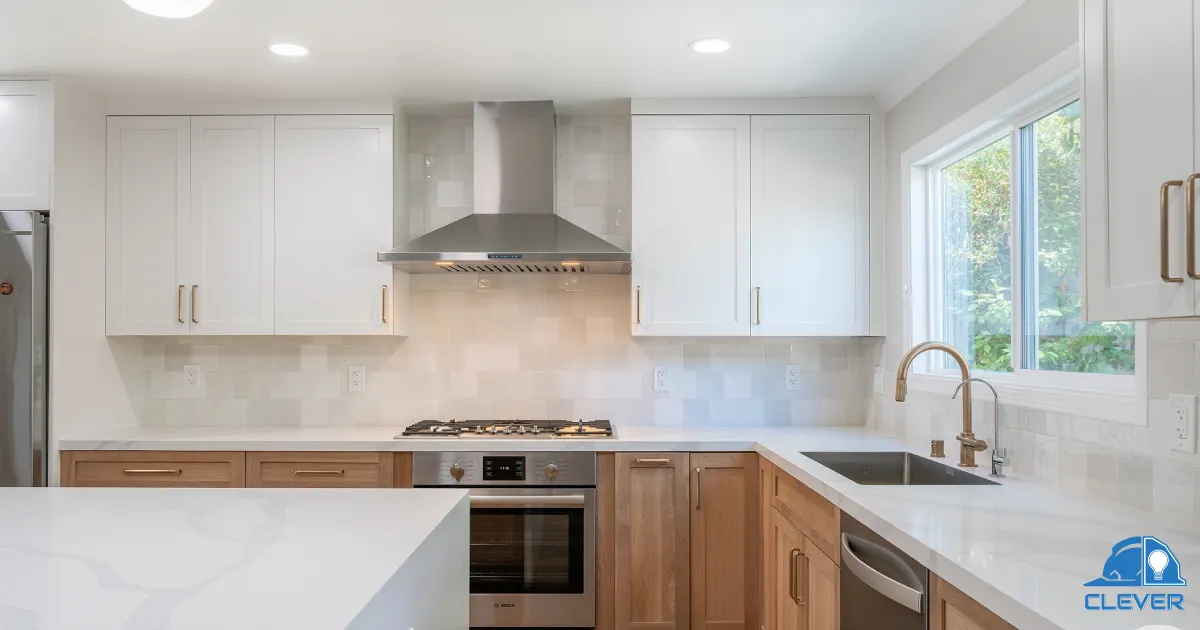
Introduction to Kitchen Remodeling Costs in the San Francisco Bay Area
The overall cost of a Bay Area kitchen remodel can vary wildly, from the significant expenses like cabinets and flooring to the incidentals that make a house a home.
On the most basic level, the overall kitchen remodel cost is primarily based on three key factors:
- The room’s square footage
- Materials required and cost
- Changes to the kitchen’s layout
In most cases, if the kitchen is bigger, it will cost more to overhaul the space simply because the material required will be more costly.
Traditionally, cabinets, flooring, and countertops are the most significant investments, followed by appliances, HVAC, and labor.
The remainder of your budget will be devoted to:
- Windows
- Doors
- Design
- Lighting
- Paint
- Windows
- Plumbing and fixtures
A final consideration many homeowners overlook is geography, but we will dive deeper into this subject later.
Why Kitchen Remodeling is a Major Investment
You will be very surprised to learn that Americans living in the Pacific region, including Hawaii, Oregon, California, and Alaska, enjoy one of the highest returns on investment, or ROI, roughly 92.9%, on a minor or mid-sized kitchen remodel.
Any kitchen renovation, big or small, is a significant emotional and financial investment.
Thoughtfully planning a kitchen remodel with your budget and the average home prices in your neighborhood has several benefits, including:
- Improved energy efficiency and functionality
- Safety and comfort
- A bump to your home’s value
- Increased storage and optimal use of the space
Emotionally, a renovated kitchen better reflects your personal aesthetic and is a significant investment in your family’s future.
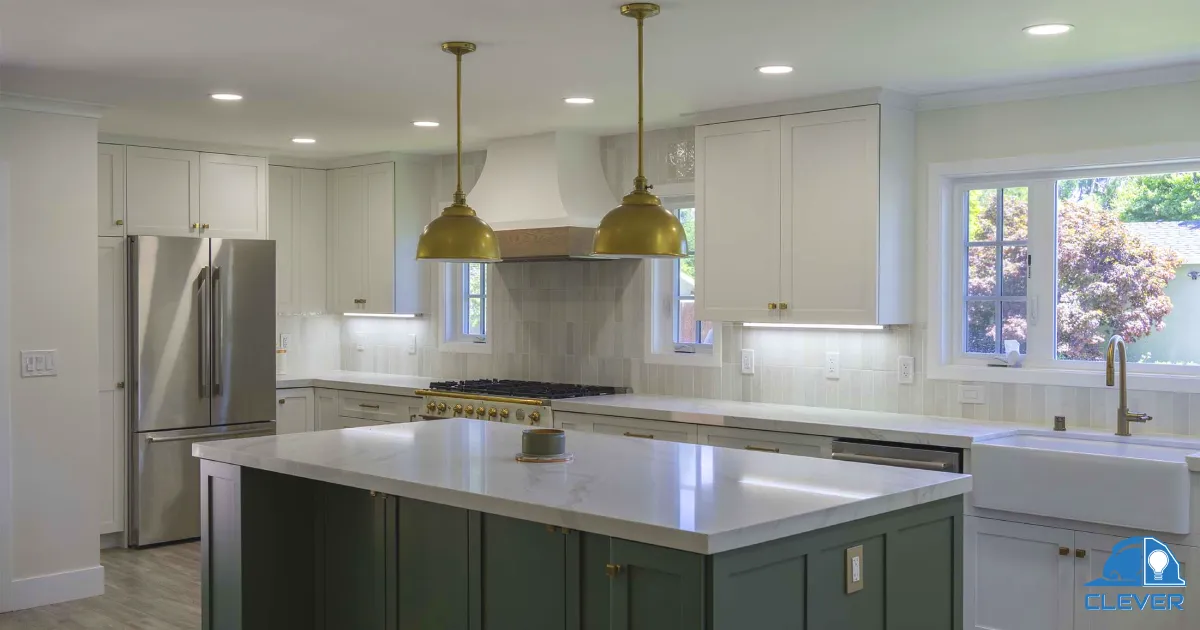
Factors Affecting Kitchen Remodel Costs in the Bay Area
Living in the Bay Area is like a dream, except for the exorbitant cost of living, which is nearly 20% higher than in the rest of the United States.
Does this mean Bay Area homeowners will pay more for kitchen countertops, new appliances, and high-quality cabinetry?
The answer is “yes” in most cases because the cost of materials and labor typically mimics an area’s cost of living – The higher the living costs, the more you will pay for a kitchen renovation.
There are other region-specific factors that will impact your renovation costs and budget, such as:
- A push towards eco-friendly renovations: California is at the forefront of the green renovation industry. To remain competitive and ensure the most significant ROI, you must splurge on eco-friendly upgrades, including renewable flooring and energy-efficient appliances.
- Historic homes and preservation rules: The Bay Area has a high concentration of historic homes, and you must abide by your city’s regulations. For example, San Jose historic homes must follow the rules set forth by the city council in 2003.
- Luxury finishes and high home values: The Bay Area’s median home price is over $1,000,000, which is much higher than the national average, often warranting a high-end kitchen remodel.
Understanding Regional Price Variations
Project costs can vary wildly depending on your zip code.
You are likely to pay more for your kitchen renovation than a cousin in the Midwest or a college friend who calls Mississippi home.
While creating a preliminary budget, keep these regional home remodeling price variation factors in mind:
- Rural vs. urban: A higher demand coupled with higher housing and living costs in urban areas translates into higher kitchen remodeling costs than in rural settings.
- Material demands: Southern California is experiencing steady real estate growth, and higher demand for materials drives the price.
- Material availability and accessibility: Local pricing and access to certain materials, including lumber, can significantly impact your renovation costs.
How This Guide Can Help You Budget for Your Project
Between understanding region-specific material pricing and determining a more realistic budget based on your home’s location and value to deciding whether to replace or refinish countertops, the idea of understanding the rough cost of your kitchen project can seem impossible.
Don’t sweat it.
Our team of experienced, trained professionals can help you determine the cost per square foot of your renovation project and the best use of your resources.
Your design team will consider several factors when helping you formulate a budget you can live with.
There is a reason why customers turn to our Expert Kitchen Remodeling Services in Menlo Park, CA: Our commitment to quality, excellence, customer satisfaction, and transparency.
Let us help you transform your kitchen without the hefty price tag.
Key Factors That Influence Kitchen Remodel Costs
You’ve learned about the major factors that will influence your kitchen remodeling costs: your kitchen’s square footage, the cost of materials, and any changes you make to the layout.
Other key factors include your home’s value, material demand and availability, and zip code.
Labor costs will eat up roughly 20% to 35% of your overall budget, but this number might be even higher because you live in the Bay Area.
The high demand, coupled with higher salaries paid to contractors, subcontractors, and designers, means you will pay more for the cost of labor.
If you are concerned about the labor costs for a complete kitchen remodel, contact us today to discuss the strategies we employ to maintain feasible material and labor prices.
Kitchen Size and Layout
The larger the space, the more your kitchen renovation will cost, on average, because you will require more materials to finish the room.
This makes sense, but did you know how much changing the layout can impact your budget?
A layout change is often structural, requires additional materials, increases labor costs, and can impact your electrical, HVAC, and plumbing budget.
Talk to your designer and think twice before changing your kitchen’s layout.
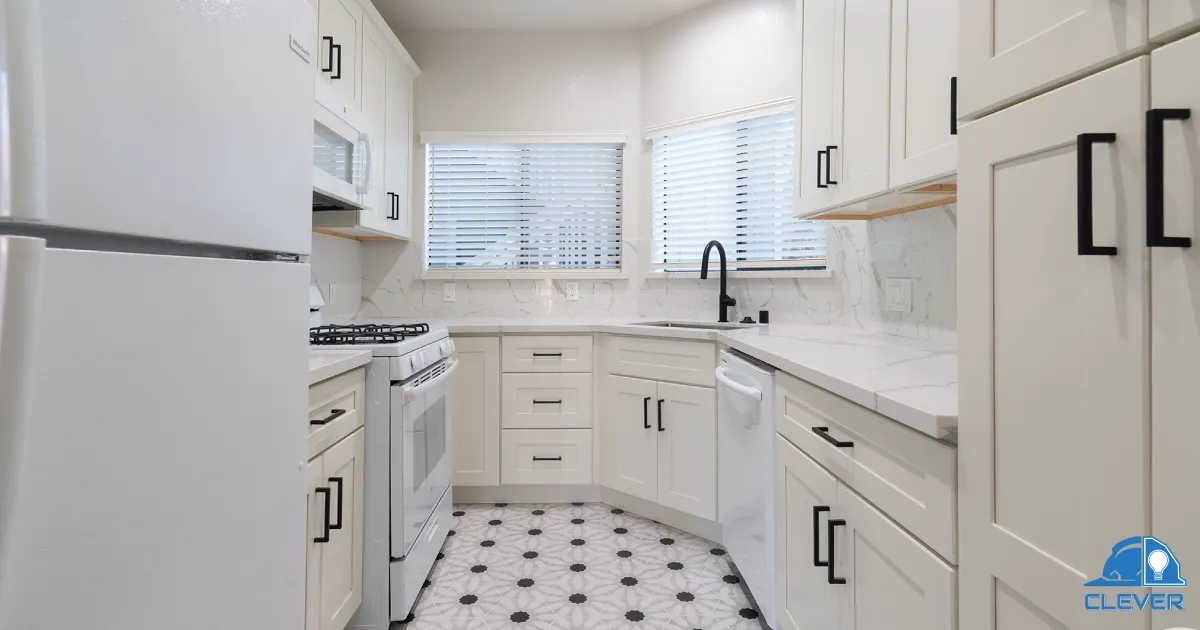
Small Kitchens (Less Than 100 Sq. Ft.)
The average 10×10 kitchen remodel will cost anywhere between $15,000 to $30,000.
The cost of just about everything, from appliances to kitchen cabinets and labor, will be far less because you are working in a smaller space, and the renovation will take far less time to complete.
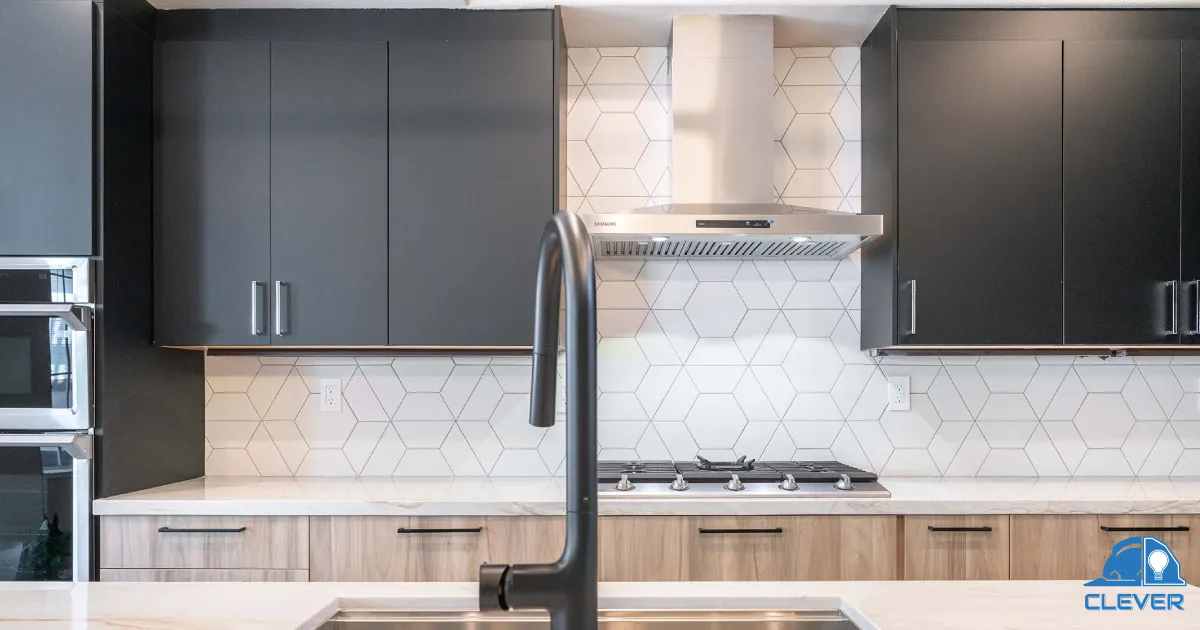
Medium-Sized Kitchens (100-200 Sq. Ft.)
The typical cost of a medium-sized kitchen remodel, or a kitchen between 100 and 200 square feet, in the Bay Area is typically between $50,000 and $100,000.
Of course, if you choose high-end finishes, including natural stone countertops, luxury vinyl plank flooring, or custom cabinets, you can expect to spend on the higher end of the spectrum.
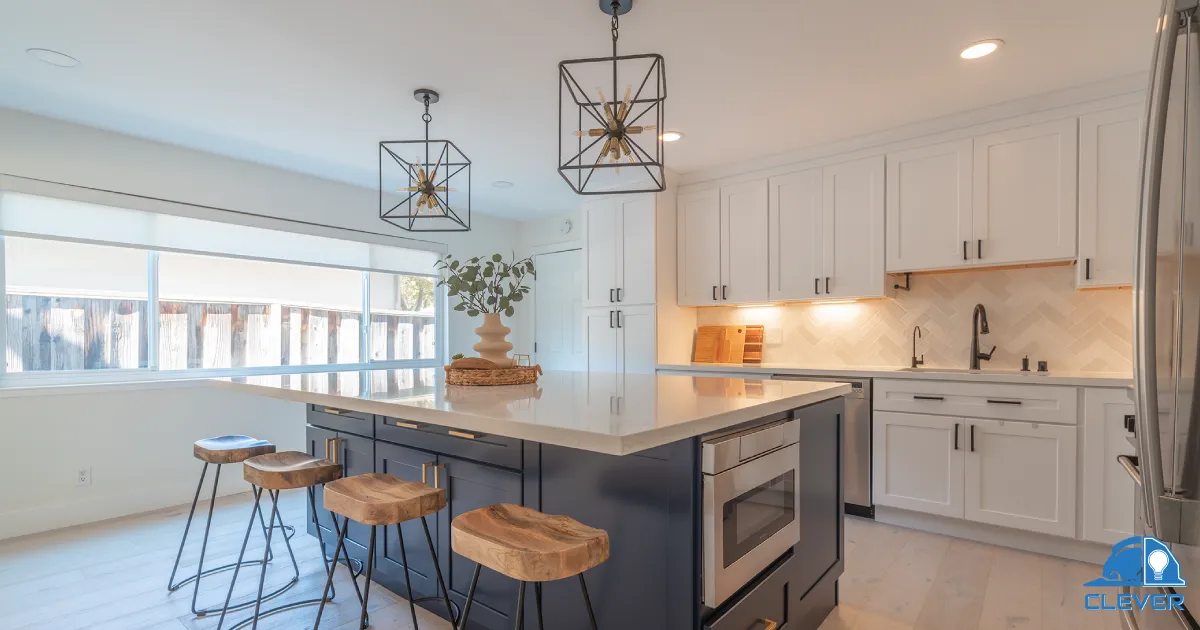
Large Kitchens (Over 200 Sq. Ft.)
Expect your extensive kitchen renovation to cost in excess of $100,000 in the San Francisco area.
Larger luxury homeowners will pay more because they want the materials and finishes to match those present in the rest of the home.
Effective planning and working with trusted contractors can save you several thousand dollars, so do your homework and find the right contractors who understand how to work on high-end homes.
Scope of Remodeling – Minor, Mid-Range, or High-End
In addition to the size, kitchen remodeling projects fall into three tiers, or scopes, that reflect not only the kitchen’s size but also the work and materials required:
- Minor remodel: The simplest and most cost-effective, minor remodels average between $15,000 and $30,000.
- Mid-range remodels: A step above a refresh, a mid-range remodeling project often involves cosmetic updates and the installation of new appliances, flooring, counters, and stock cabinets.
- High-end remodel: A complex, pricey, and complete renovation, high-end remodels can cost more than $150,000 in the Bay Area.
Cosmetic Updates vs. Full-Scale Renovation
Minor remodels typically involve cosmetic updates or upgrades that improve the room’s visual appeal but not its structure or function.
Popular kitchen cosmetic upgrades include:
- Replacing appliances
- Painting the walls
- Installing a backsplash
- Replacing hardware and light fixtures
A full-scale renovation is a total overhaul of the space that can often mean ripping the walls down to the studs and starting from scratch.
Full-scale renovations are considered high-end renovations because of the scope and cost of materials and labor.
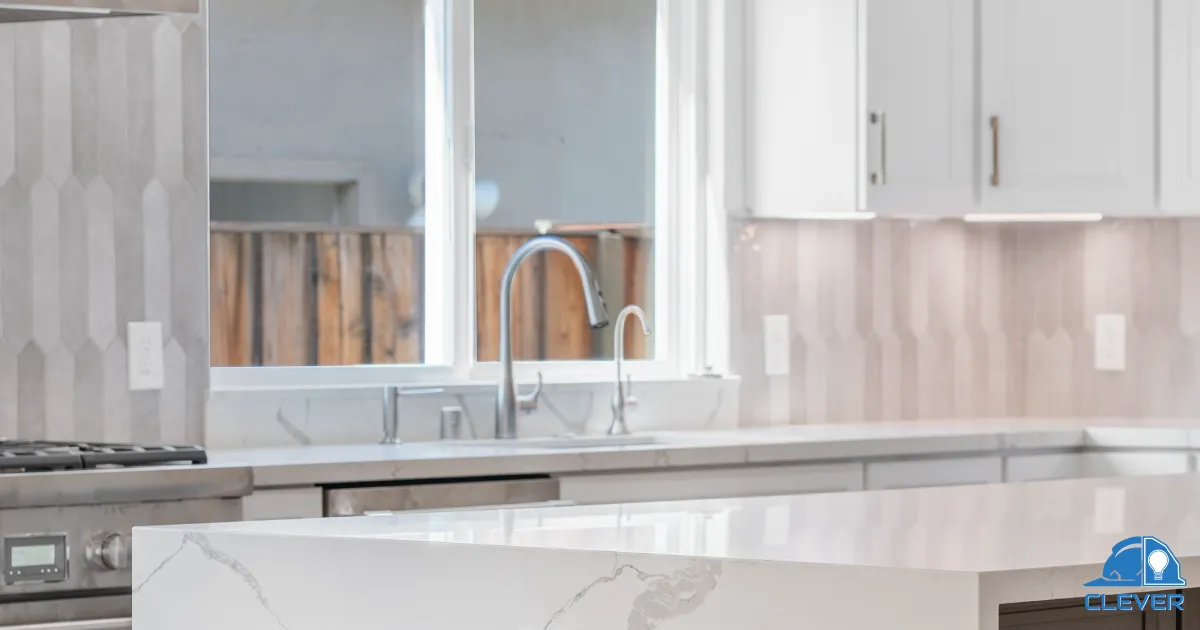
Quality of Materials and Finishes
The cost of materials can quickly eat away 2/3 of your renovation budget.
Premium materials, such as stone, hardwood flooring, and custom hardwood cabinets, can significantly impact your budget.
For minor or mid-range renovations, consider more cost-effective materials, including:
- Vinyl plank flooring
- Stock cabinets
- Laminate countertops
If you aren’t sure which materials and finishes will work with your budget, ask the Sunnyvale Kitchen Remodeling Experts for help.
Stock vs. Semi-Custom vs. Custom Cabinets
Custom cabinets are another significant investment that significantly impacts your kitchen remodel budget.
These made-to-order cabinets are ideal for mid-range and high-end renovation projects because their cost could exceed $1,200 per linear foot.
Stock cabinets are prefabricated in several standard sizes and colors and are ready to assemble, making them more cost-effective, easier to install, and ideal for a small kitchen renovation.
Countertops – Laminate, Quartz, Granite, or Marble?
Expect to allocate roughly 10% to 20% of your budget for countertops.
As with every other renovation material, there is a variety to choose from, from high-end options like natural stone to more budget-friendly options like laminate, tile, and butcher block.
In the Bay Area, custom stone counters can cost anywhere from $50 to $175 per square foot, with marble and soapstone being two of the most expensive options.
Mid-range laminate countertops are roughly $40 to $50 per square foot in southern California, making them durable and ideal for minor or mid-range remodels.
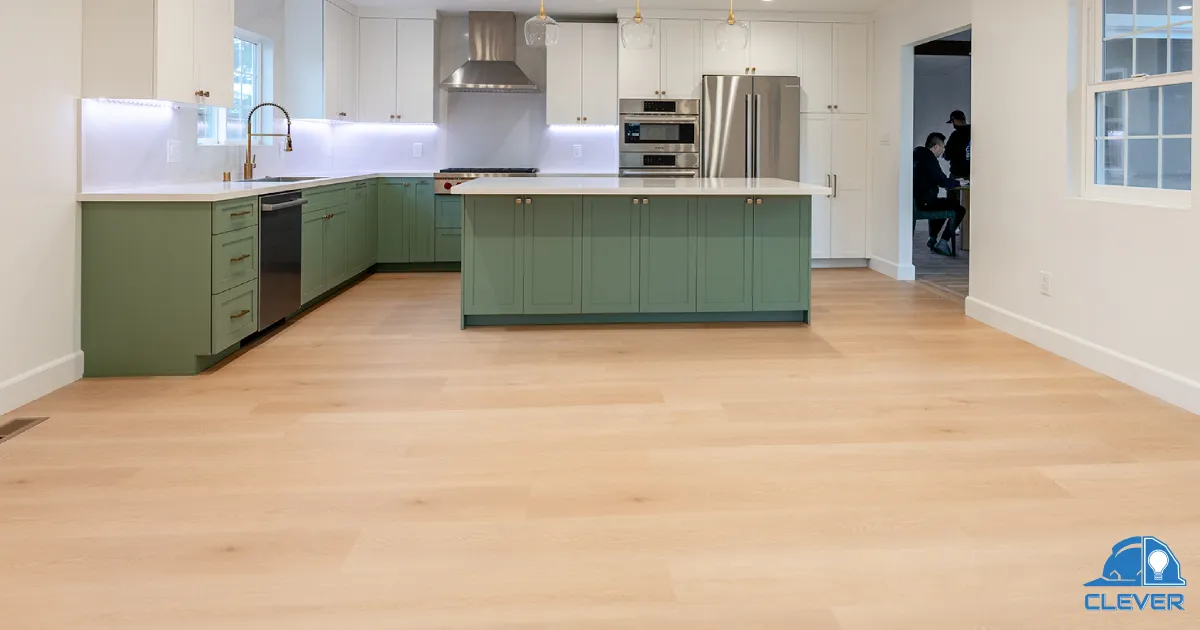
Flooring Choices and Their Costs
The cost of kitchen flooring can vary greatly depending on the materials and installation cost.
Here are a few popular options, their pros and cons, and the average cost of each:
- Laminate: An excellent alternative to hardwood because of its durability, mid-range laminate costs between $6 and $9/sq ft.
- Tile: Durable and easy to maintain, the cost of tile flooring can vary significantly between $6 and $20/sq ft. Installation costs can be higher, which can greatly impact your overall price.
- Vinyl: Rolled vinyl flooring can cost as little as $1/sq ft. Vinyl plank flooring, which can authentically mimic the look of stone or hardwoods, costs an average of between $3 and $10/sq ft.
- Hardwood: A classic choice reserved for high-end renovations, hardwood flooring is the gold standard that can raise your home’s value. Hardwood flooring can cost more than $25/sq ft.
Labor and Contractor Fees in the Bay Area
The Bay Area is beautiful, but you will pay a premium for labor and contractor fees.
The reasons are varied and include:
- High demand. The Bay Area’s population is booming, leading to a high end for experienced professionals.
- High housing costs. Higher land prices, inflation, and market volatility equal higher labor costs.
- Strict regulatory requirements. The implementation of strict sustainability practices has driven up the cost of materials and labor.
- Skilled labor. Specialized, skilled laborers can charge a premium based on their training and experience.
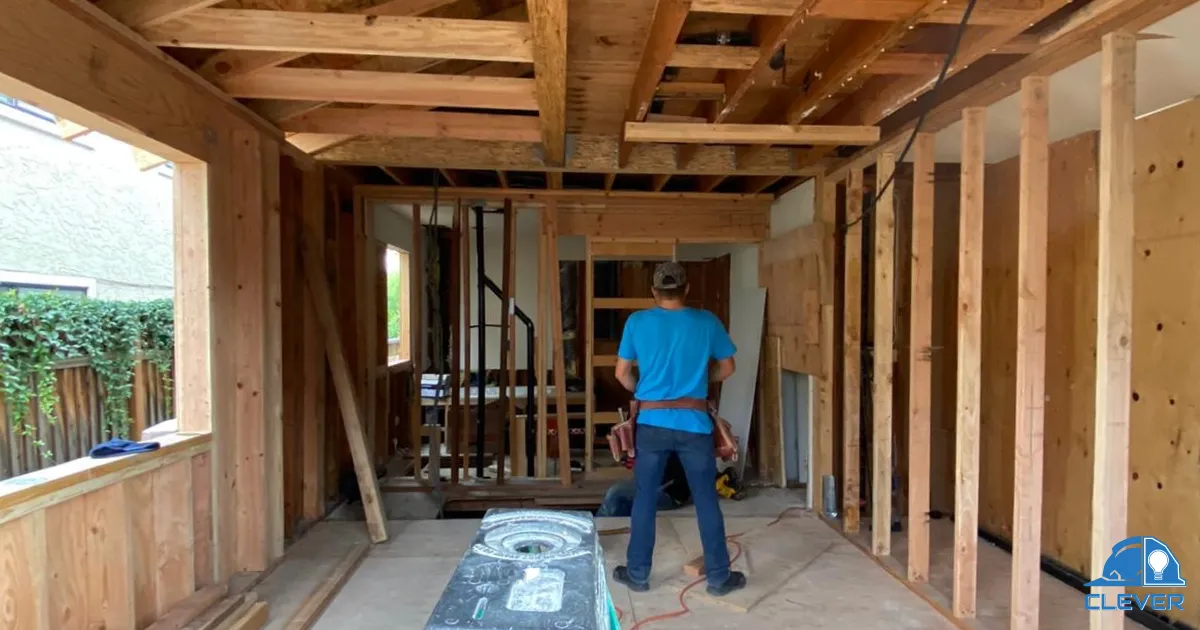
H4: Average Hourly Rates for Contractors
You can expect to pay between $120 and $350 per hour, which makes labor and contracting prices roughly 30% to 50% higher than in the rest of the United States.
Expect your contractor to charge between a 10% to 20% markup on materials.
For example, if the contractor purchases $100 in materials, you will be charged between $110 and $120, which is very standard throughout the United States.
Permit and Inspection Fees
Contractors will factor in the time required to obtain the proper permits, which can be very time-consuming.
Local building codes and the cost of obtaining building permits can vary significantly depending on where you live in the Bay Area.
For example, if you live in San Jose, the building permit requirements vary depending on the job you are performing, but your contractor will need to submit permits for electric, plumbing, structural changes, and the installation of new appliances.
Building codes in the Bay Area are very strict because of the state’s environmental regulations.
This means your contractor will need specialized materials and permits, both of which will impact costs.
Because of the regulatory complexity and high demand, construction inspection costs are also higher and range from $500 to $2000, depending on the project’s size and scope.
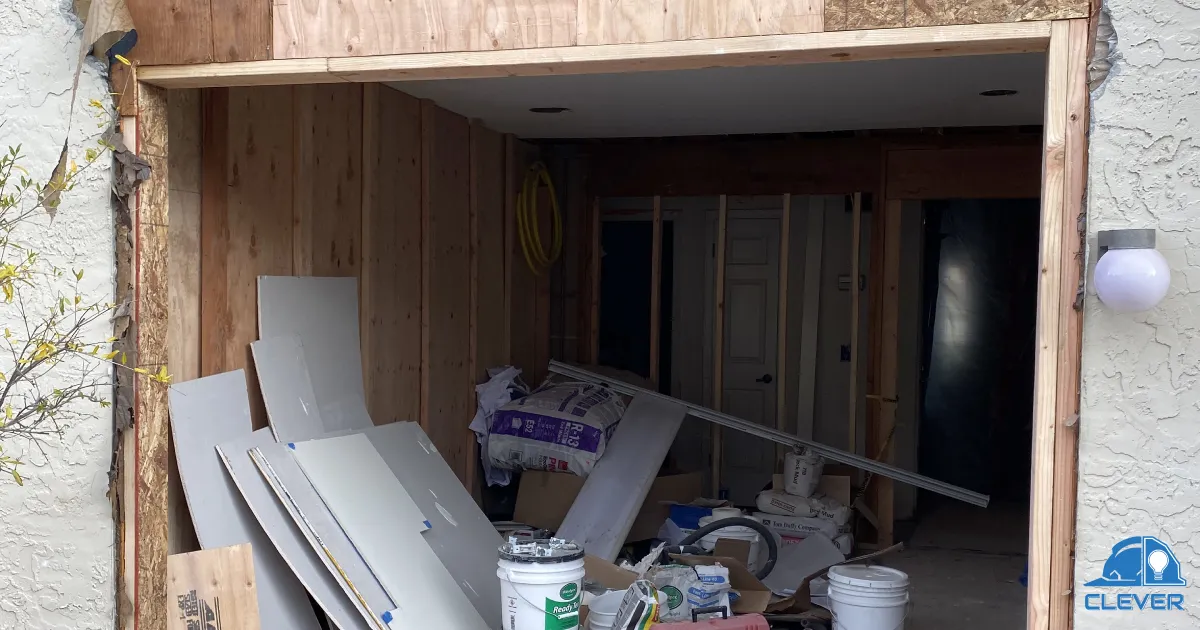
Cost of Structural Changes and Layout Modifications
Open-concept kitchens that create a seamless flow from the kitchen to the rest of the living space have been the norm for several years, and this is not expected to change any time soon.
Structural changes and modifications to your kitchen’s layout are common in high-end kitchen renovations, but how much will these alterations impact your bottom line?
Removing or Moving Walls
Creating a completely new layout is often achieved by removing or moving existing walls.
Potential structural changes, increased costs, and additional permit requirements all impact the cost of moving walls during the renovation.
Contractors will consider several factors before altering the kitchen’s layout, including:
- Structural support alterations
- HVAC, electrical, and plumbing upgrades
- Cabinet installation
- Home valuation changes
A structural engineer will also be consulted to ensure you are not knocking down or relocating a load-bearing wall.
We can help you determine the structural impact of moving walls during Mountain View, CA Kitchen Remodels.
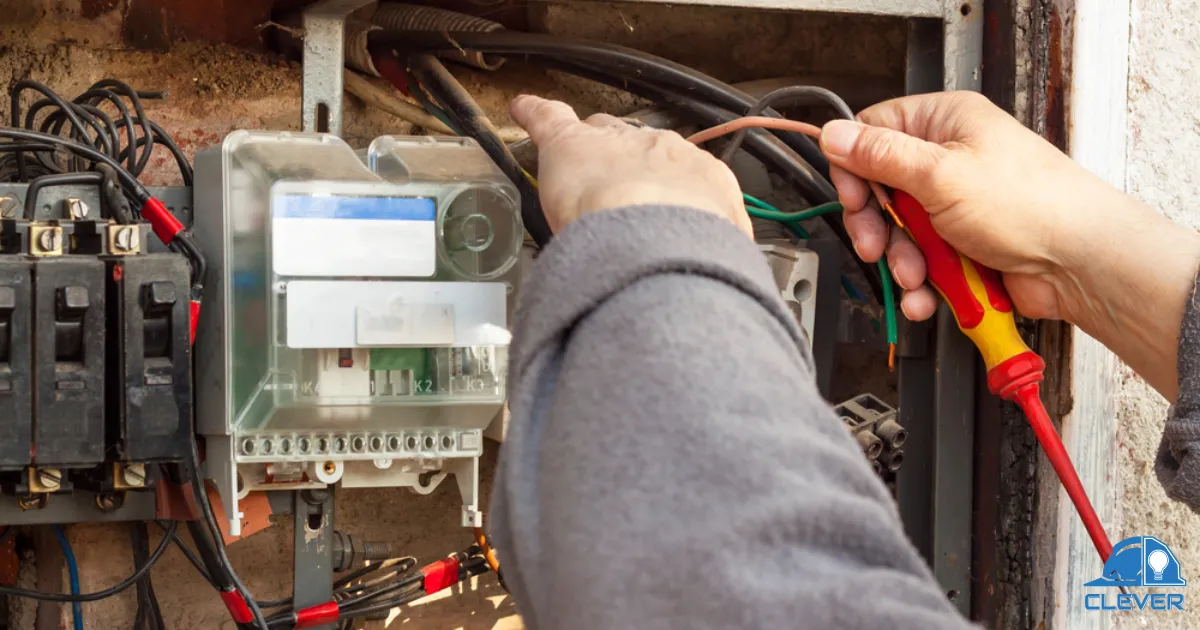
Electrical and Plumbing Upgrades
Moving a wall or making any structural alterations often requires electrical and plumbing upgrades.
Even if you are not altering the layout, the contractor might recommend mechanical upgrades, especially if the current electrical and plumbing are outdated or cannot support newer-model appliances.
Mechanical upgrades can cost between $2,000 and upwards of $20,000, depending on the breadth of the work and labor.
Custom vs. Prefabricated Components
Whether you live in a historic home on San Francisco’s Alamo Square or a more modest home in San Jose or Redondo Beach, you want cabinets and countertops that fit your home’s aesthetic and make sense for your home’s value and budget.
Custom components are tailored made to meet your home’s specifications and typically constructed from more high-end materials, such as stone countertops and solid, hardwood cabinets.
Prefabricated counters and cabinets are pre-manufactured and meet generic specifications that work with most kitchen layouts.
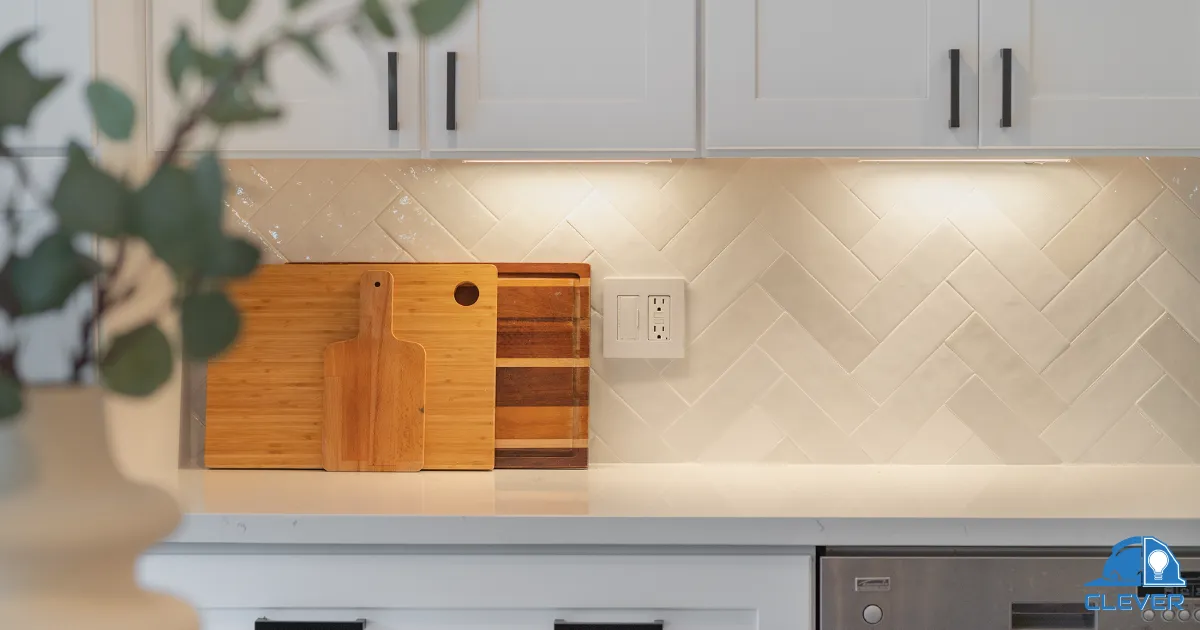
Prefabricated vs. Custom Cabinets
Your kitchen cabinets are the room’s focal point and, in many renovations, the most significant expense.
Consider these factors while choosing between custom and prefab kitchen cabinets:
- Layout. Stock cabinets are constructed for standard kitchen sizes and layouts. Owners of higher-end homes and those with irregular layouts would benefit from customized cabinetry.
- Finish and style. Prefab cabinets provide you with minimal options.
- Cost and budget. Custom cabinets cost far more than box cabinets, which is a substantial budgetary consideration.
- Quality and timing. Nothing beats the quality of custom cabinets. However, custom cabinets take far longer to construct and install.
Custom Countertops vs. Prefabricated Slabs
Many of the same considerations, including the finish and style, timing, and cost, that homeowners must factor into their renovation budget hold true for countertops.
Installation and construction of prefab countertops take less time, meaning you will save even more if you opt for slabs rather than custom counters.
However, once again, custom countertops provide you with more color and finish options, allowing you to create a one-of-a-kind kitchen that will definitely be the envy of the block.
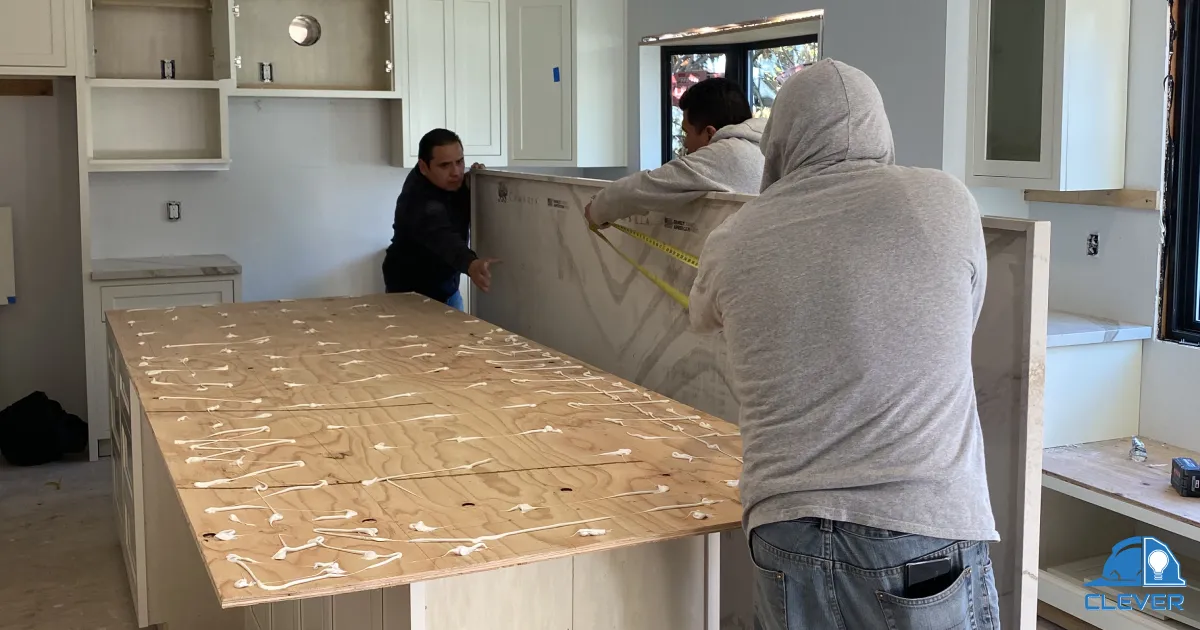
Kitchen Remodel Timeline and How It Affects Costs
From the initial design to the very last walkthrough, a typical San Francisco Bay Area kitchen renovation will take anywhere from approximately six to 12 weeks to complete.
Of course, several factors will influence your timeline, including:
- Your project’s size and scope
- Permit requirements
- Material and labor availability
- Unexpected delays
Cosmetic changes can be completed in less than a month, while a massive, complete kitchen renovation can take six months or more.
The longer it takes to complete the renovation, the more labor costs you will incur, so keep this factor in mind when formulating your budget.
Effective design, planning, and staying with the original plan and budget can help mitigate these costs.
Fast-Track vs. Standard Remodeling Timeline
The majority of traditional renovation projects typically follow a set timeline:
- Design and planning
- Order materials
- Demolition
- Installation
- Clean-up and finishing touches
Fast-tracking creates a truncated timeline, and the steps mentioned above overlap.
Fast-tracking has benefits, including lower labor costs, increased efficiency, and, in the case of investment properties, a higher turnover and ROI.
However, fast-tracking creates a high-stress construction environment that can lead to avoidable mistakes.
Discuss each and every potential pros and cons of each with your general contractor.
Seasonal Price Fluctuations
Material and labor availability can vary greatly, depending on the season.
Due to the favorable weather, May through September is the busy season in construction.
However, the Bay Area’s year-round seasonable weather can mean top construction firms will be busy year-round.
Consider planning your renovation project for the off-season, winter, to save the most money on materials and labor.
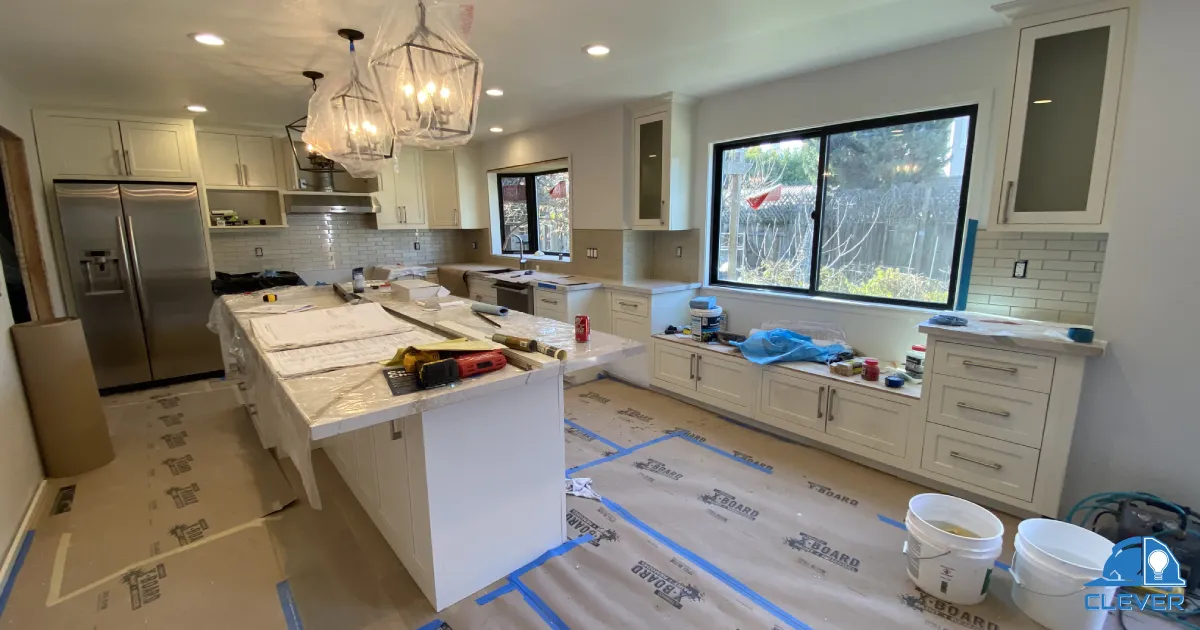
Breaking Down Kitchen Remodel Costs by Category
It’s time to take the plunge and plan a Kitchen Remodel in San Jose, but how much should you realistically allocate to cabinets, flooring, and the other aspects of your project?
Check out this breakdown of a typical Bay Area kitchen renovation:
- Cabinets. 25-35%
- Labor. 15-25%
- Appliances. 18-20%
- Countertops. 10-15%
- Lighting and flooring. 10-15%
- Plumbing, Electrical, and HVAC. 5-10%
- Design fees. Roughly 5%
Cabinets – The Largest Expense
The cost of materials and installation of your new kitchen cabinets will take up a healthy portion of your renovation budget.
Whether you choose semi-custom, custom, or stock cabinets, the reason why cabinets are so expensive is based on the same common factors:
- Cost of wood
- Cost of hardware
- Manufacturing
- Labor and installation costs
- Shipping
- Wholesale markup
Cost of Stock, Semi-Custom, and Custom Cabinets
Kitchen cabinet costs can vary drastically, and one of the biggest factors, along with the kitchen’s size and complexity, is whether the cabinets are stock from your local home improvement or design store, semi-custom, or fully custom.
Here is a simple price breakdown:
- Stock cabinets. $3,000 to $4,000
- Semi-custom cabinets. $10,000 or higher
- Custom cabinets. $25,000 or higher
Popular Cabinet Brands in the Bay Area
New cabinets are a significant investment, but the team at Clever Design & Remodeling is up to date on the newest design trends, and we only work with the top cabinet brands in the Bay Area, including:
- Thomasville
- Henrybuilt
- Timberlake
- American Woodmark
- MasterCraft
- Medallion
- UltraCraft
Countertops – Materials and Installation
In the Bay Area, reputable contractors charge between $40 and $250 per square foot to install kitchen countertops.
If this seems like a wide price range, it’s because of the price of materials and the complexity of the installation.
Labor rates can also vary depending on where you live in the Bay Area, with some of the highest labor prices in the San Francisco Metro Area.
Budget-Friendly vs. Luxury Options
Before you assume that quality cabinets are out of your price range, realize that many more budget-friendly options, including laminate, mimic the look of real stone without the massive price tag.
While discussing replacing countertops, keep these typical Bay Are price ranges in mind:
- Laminate. $20-$50/sq ft
- Solid stone. $35-$100/sq ft
- Granite. $50-$200/sq ft
- Marble. $80-$250/sq ft
- Quartz. $75-$180/sq ft
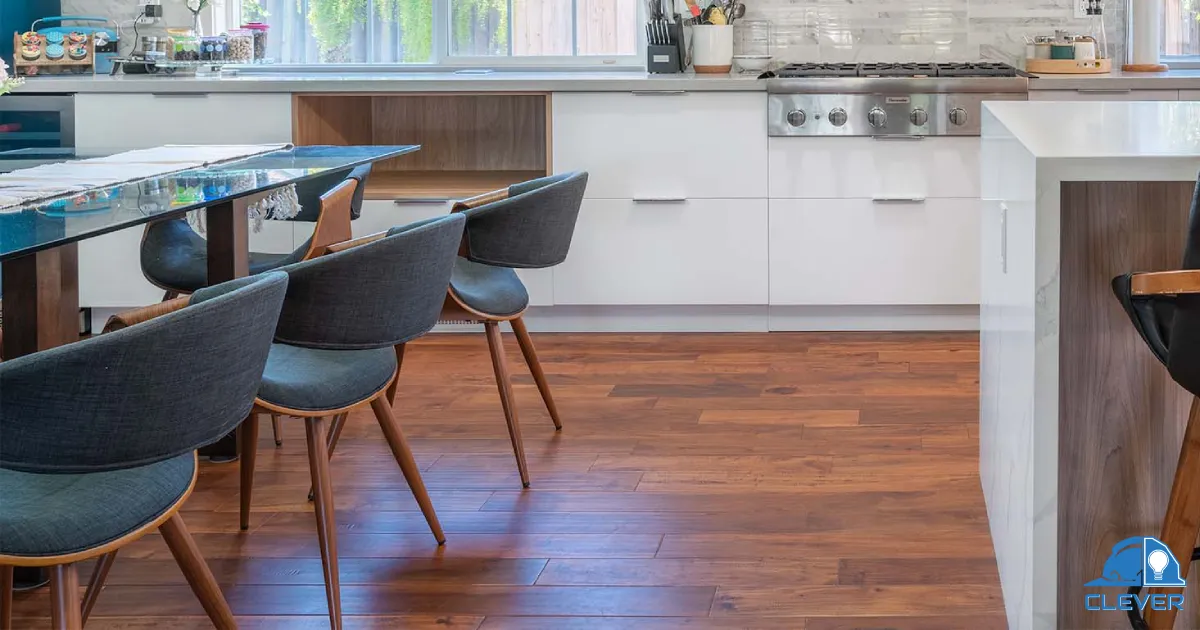
Flooring – Choosing the Right Material
Did you know that because of the Bay Area’s humid climate, most contractors recommend engineered hardwood rather than natural hardwood because of the latter material’s ability to withstand moisture?
This is just one of the many considerations to keep in mind when choosing the right flooring for your Bay Area kitchen – Remember these too:
- Durability
- Aesthetics
- Maintenance requirements
- Foot traffic
- Price
Hardwood vs. Tile vs. Vinyl
You’ve familiarized yourself with the prices of different flooring options, but how will other factors influence your decision?
Hardwood flooring is durable, but it’s also expensive, difficult to maintain, can warp under extreme humidity, can easily be scratched, and is very prone to mold.
When installed properly, tile floors are practically waterproof and easy to maintain, but they are pricey to install, and you need to take special care of the grout.
Vinyl plank flooring looks like authentic wood for a fraction of the cost and is low-maintenance and comfortable.
The product is also made from non-recycled materials, which can be considered if you plan a green renovation.

Appliances – Standard vs. Smart Kitchen Tech
Traditional appliances don’t have all the bells and whistles of smart appliances, including temperature zones and remote capabilities, but they are more cost-effective.
The price of appliances has jumped approximately 12% over the past year.
This, coupled with California’s high energy costs, creates a dilemma for Bay Area homeowners: Do you save money upfront on standard appliances or splurge on energy-efficient appliances, which allow you to enjoy lower energy bills in the future?
Costs of Energy-Efficient Appliances
The right appliances can do more than save you money; they can also enhance your home’s aesthetic and create a cohesive finished product.
Considering smart appliances for your Kitchen Remodeling Atherton, CA, project?
Expect to pay these prices in the Bay Area:
- Washing machine. $500 to $1,200
- Refrigerator. $700 to $1,500
- Dishwasher. $500 to $1,000
- Dryer. $500 to $1,000
- Induction cooktop. $1,000 to $3,000
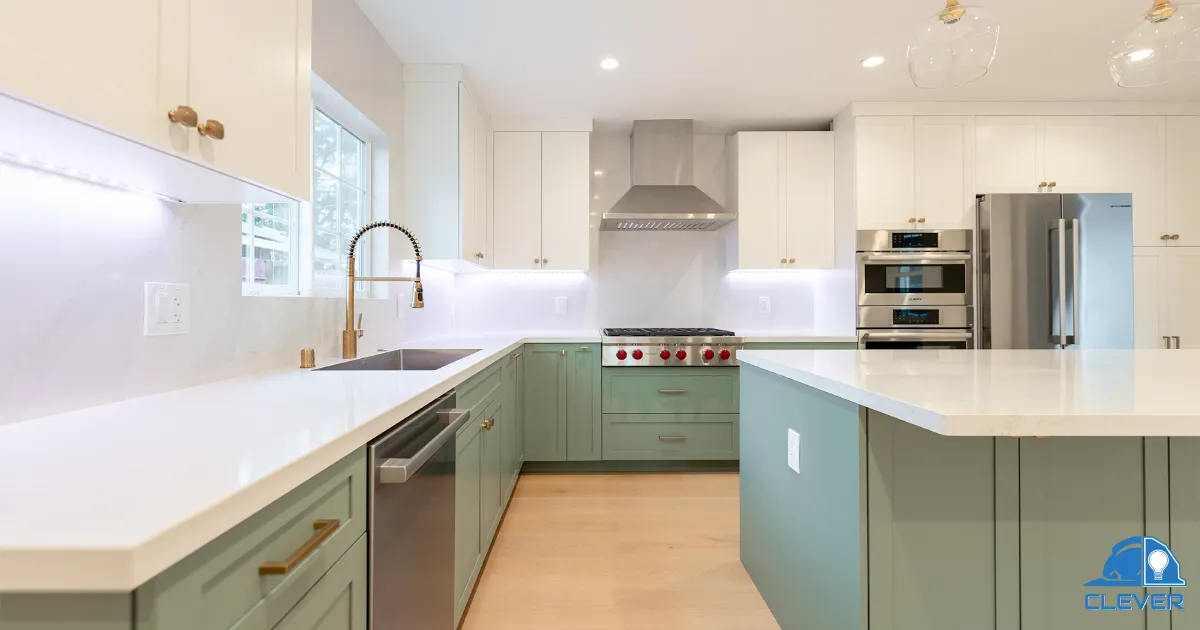
Lighting Fixtures – Enhancing Your Kitchen’s Look
Never underestimate the importance of proper lighting.
In addition to being an aesthetic consideration, insufficient lighting is a safety hazard.
Consult with your designer to ensure you include these three types of lighting in your kitchen renovation plan:
- Ambient lighting. Overhead lighting provides general illumination to the room.
- Task lighting. Incorporate task-specific lighting, such as a fixture over the stove or island.
- Accent lighting. Decorative lighting that highlights architectural details or other features.
Recessed Lighting vs. Pendant Lights vs. Under-Cabinet Lighting
Many homeowners overlook the importance of lighting fixtures or how much picking the wrong fixtures can negatively impact their budget.
The proper lighting can really make or break your kitchen’s final look, so consider the costs, pros, and cons of these three very popular options:
- Recessed. At between $100 and $300 per fixture, recessed lighting provides perfect ambient lighting but must be installed by a pro.
- Pendant. Pendant lighting can add a pop of color and texture while providing crucial lighting over the kitchen island. Prices vary greatly, so work with your designer to find the right fixtures.
- Under-cabinet. This task lighting can be pricey, costing an average of between $1,500 and $2,500 for materials and labor.
Plumbing and Electrical Work
One of the most unexpected expenses Bay Area homeowners often rarely budget for is plumbing and electrical upgrades, typically costing anywhere from $2,000 to $20,000 or more in the SF area.
Expect costs to be higher if your plumbing or electrical is outdated, you are upgrading to state-of-the-art appliances that require more power, or if you are moving or adding a wall.
When you Remodel Your Kitchen with Clever’s Home Services in the Bay Area, you can rest assured your electrical and plumbing are up-to-date and up-to-code.
Upgrading to Code – What It Means for Your Budget
Your home must comply with the San Francisco Bay Area’s Building, Electrical, Plumbing, Mechanical, Energy, and Green Building Codes.
All permits submitted by your contractors must fall in line with these codes, and any upgrades and changes you must make must align with these regulations.
What does this mean for your budget?
Remaining compliant can raise your plumbing and electrical budget by an average of between $1,500 and $9,0000!
Painting and Finishing Touches
You’ve made it to the final stretch, and your contractors are preparing to paint and add any finishing touches.
What exactly are these “finishing touches,” and how much will they impact your budget?
The average cost of final touches in the Bay Area is between $140 and $150/sq ft and includes the installation of:
- Backsplashes
- Decorative accents
- Hardware
- Flooring – Many construction companies include the cost of flooring in the “finishing touches” budget.
- Lighting
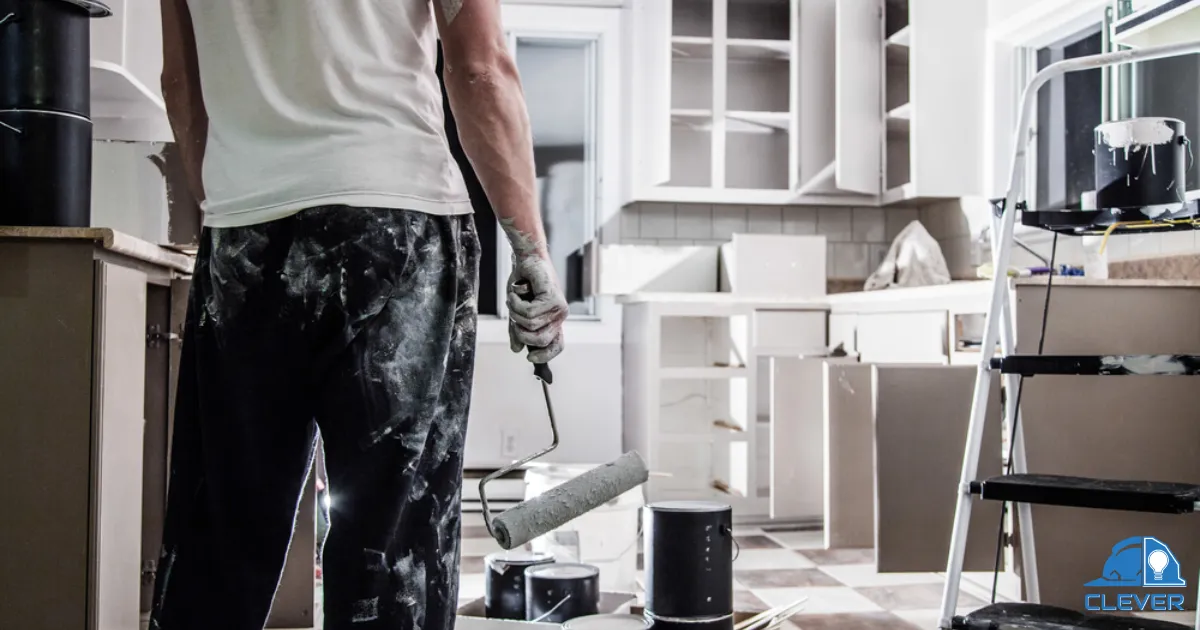
DIY vs. Professional Painting Costs
As with every other aspect of your kitchen renovation project, the cost of painting your kitchen can vary wildly, depending on some very common factors, including:
- Paint quality
- The room’s square footage
- The job’s complexity
Anticipate paying from $3 to $6 per square foot for a DIY paint job and anywhere between approximately $5 and $10 per square foot for a professional job.
Cost shouldn’t be the only factor; however, you must also consider the time it takes to paint and the quality of the finished product.
Permits and Other Hidden Costs
Every renovation and city is different, but in most cases, you will require building permits if your remodel requires any of the following:
- Electrical upgrades or modifications
- Plumbing changes
- Mechanical upgrades or updates
- Structural changes
Permits are often classified as “hidden costs” simply because homeowners often overlook the costs associated with obtaining the proper permits.
Other common unexpected expenses you might face include:
- Custom work
- Timeline delays
- Changing your mind
- Lifestyle expenses, including staying at hotels, eating out, and boarding pets
Bay Area Permit Costs by City
Building permit and inspection costs vary wildly, depending on the city you call home.
For example, in San Jose, you will pay $211/hour to process the permit, $308/hour to review construction plans, and $315/hour to inspect the renovation construction.
In Sunnyvale, CA, the rate for the renovation space is $.096/square foot.
For residents of Mountain View, building permit fees for homes under 5,000 sq ft are $.036/sq ft, plus an application fee that depends on the home’s size.
Inspection and Compliance Fees
The city will charge renovation inspection and compliance fees in addition to any building, plumbing, or electrical permit fees.
The fees cover the inspector’s visit to the renovation site to ensure that all alterations and upgrades are up to code and that your builders are compliant.
Fees will vary by city, but hourly rates in the Bay Area typically range from $50 to $150 per hour.
Cost Breakdown by Kitchen Remodel Type
It’s time to get down to the brass tacks of your proposed renovation project.
How much will you spend on every aspect of your budget-friendly, mid-range, or high-end kitchen renovation project, and what are some other factors to consider?
Let’s deep dive into the three different levels of kitchen remodeling projects and some project-specific elements of each:
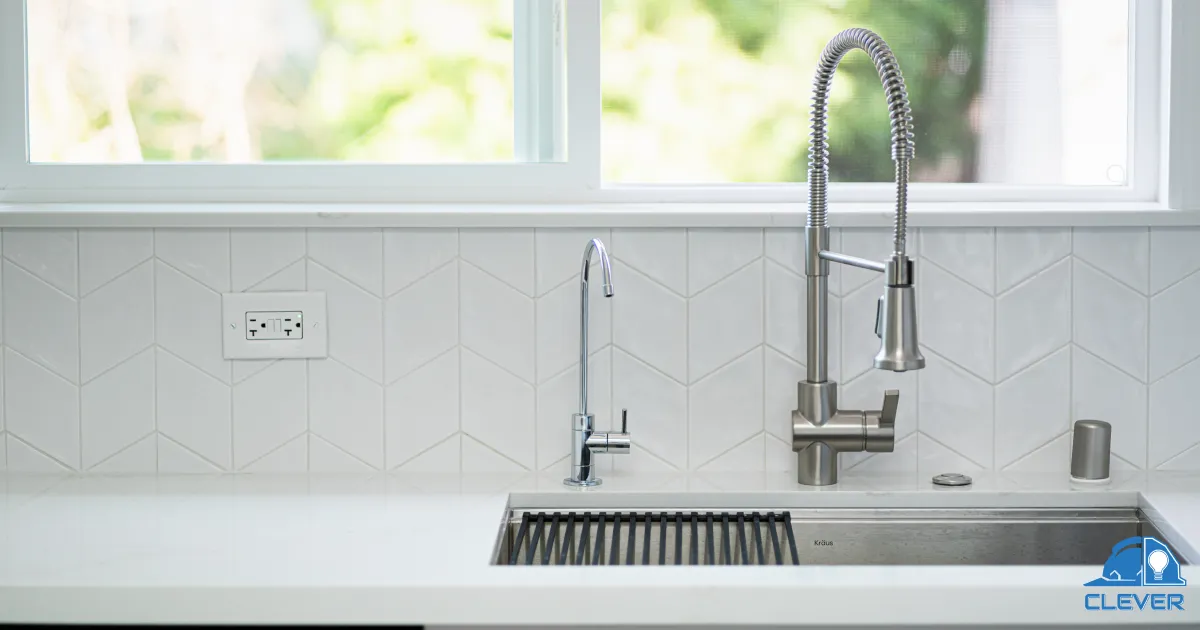
Budget-Friendly Kitchen Remodel ($15,000 – $30,000)
A budget-friendly kitchen renovation is characterized by cosmetic upgrades and essential modifications to ensure the remodel complies with the city’s building codes.
These no-frills renovations are ideal for smaller kitchens, or if your home is modestly priced and includes luxury, upgrades do not make financial sense.
What’s Included in a Low-Cost Remodel?
Experienced contractors can help you get the most bang for your renovation dollars by keeping your costs under control and making any upgrades sensible for your home’s value.
These upgrades are the hallmark of a low-budget kitchen remodeling project:
- Reface or repaint existing cabinets
- Update with laminate or low-cost counters
- Update hardware to modernize the kitchen
- Update to budget-friendly appliances
- Updated flooring with laminate, vinyl, or tile flooring
- Install low-cost lighting, such as recessed lighting and task lighting
- Add window treatments
Best Ways to Save Money
In addition to staying on task and creating a detailed budget, there are several other clever ways to keep the costs of your budget-friendly renovation from skyrocketing:
- Look for discounts or purchase items second-hand
- Repair and repaint cabinets
- Consider tackling DIY projects
- Avoid changing the layout
- Add color and texture with a low-cost backsplash
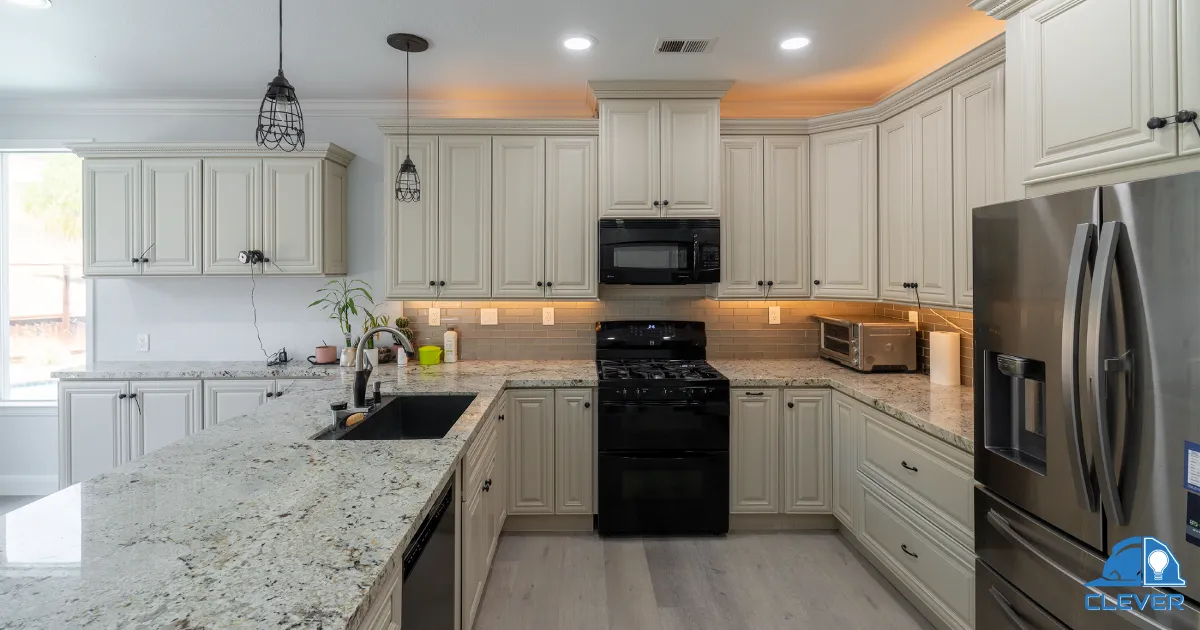
Mid-Range Kitchen Remodel ($30,000 – $60,000)
More than a refresh but less than a complete luxury overhaul, a mid-range kitchen renovation is ideal if you have the budget and want to update your tragically outdated kitchen, upgrade your basic, low-end cabinets, flooring, and counters, and personalize the space.
Mid-range remodels typically include:
- Upgrading the flooring with mid-level materials, such as luxury vinyl planks or inexpensive natural stone
- Updating the appliances with mid-range, energy-efficient models
- Adding a kitchen island
- Semi-custom or higher-grade stock cabinets
Upgrades and Customization Options
The inclusion of more high-quality materials and personalized upgrades are typically included in a mid-range remodel, and there are ways to customize your kitchen while remaining in budget, such as:
- Install mid-range hardwood flooring, which can increase your home’s value
- Rework the layout, including removing a wall to open up the kitchen
- Add a mid-range, custom backsplash
- Upgrade plumbing fixtures with higher-end models
- Install high-quality laminate or quartz counters
- Customize the room with an accent wall and artwork
Balancing Cost vs. Quality
Your budget seems vast, that is, until you start making a budget and actually paying for materials, navigating permits, and working with contractors.
The key to keeping your renovation budget in check is to learn where to splurge and where to save.
When it comes to mid-range remodels, here are a few strategies you can definitely employ to ensure you have the best outcome possible:
- Prioritize key functional elements. Budget additional funds towards focal points and functional elements, including cabinets and countertops.
- Save on secondary features. Choose more budget-friendly flooring and lighting.
- Upgrade your fixture and hardware. High-quality draw pulls and a decorative faucet will make your home feel luxurious without spending a small fortune.
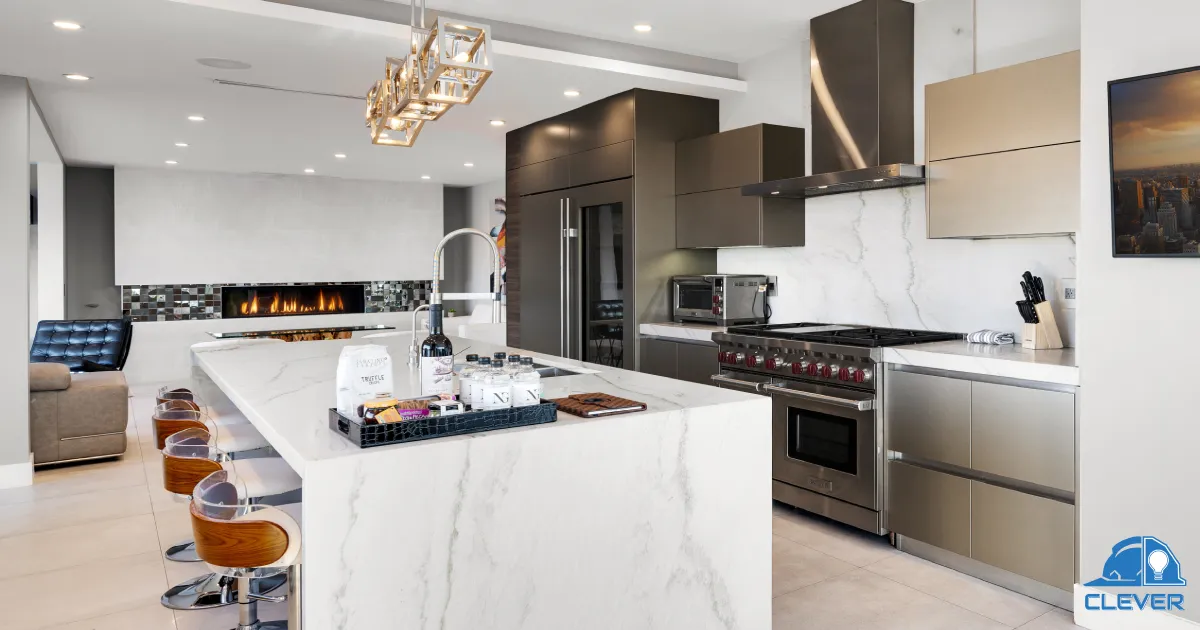
High-End Luxury Kitchen Remodel ($60,000 – $150,000+)
A top-of-the-line kitchen remodel transforms the space from an ordinary kitchen to a culinary oasis any five-star chef would envy.
A high-end remodel emphasizes luxury, and your contractors will spend a lot on almost every element while focusing on practical upgrades.
If you are planning a high-end kitchen renovation and want to stay abreast of the latest trends, check out this list of San Jose Kitchen Remodeling Color Trends for 2024!
Premium Materials and Custom Features
When you lavishly spend on your dream Bay Area kitchen, you can expect custom designs, rich textures, and premium materials.
Smart home technology, open layouts, and additional, elegant storage are just a few of the features you can expect.
Don’t overlook the bread and butter of your kitchen renovation – Functional elements.
Here are some tips on how you can marry style and function:
- Order custom cabinets. Handmade cabinets that fit your kitchen and aesthetic like a glove are a great investment to improve your kitchen’s look and flow.
- Make countertops a focal point. Luxury stone countertops are the standard. Granite is popular and costs approximately $120/square foot in the Bay Area.
- Splurge on statement lighting. Illuminate the space with a grand overhead fixture, high-end recessed lighting, and LED undercabinet lights.
- High-end and integrated appliances. Stainless steel is the standard, but many Bay Area homeowners opt for integrated appliances that sit embedded in the cabinets.
Smart Kitchen Technology and Automation Costs
A functional kitchen makes life easier, so if you are splurging on the best-quality appliances, counters, and cabinets, it only makes sense to integrate smart kitchen technology.
Bay Area homeowners are clamoring to install the latest smart kitchen technology, including smart fridges with massive touchscreens and smart cooktops that feature advanced interfaces and even suggest recipes!
Smart kitchen automation takes integration a step further by allowing you to control your appliances and lights and even play music over built-in speakers through a centralized hub or a smartphone app.
Automation costs vary throughout the Bay Area, but expect to pay anywhere between approximately $4,000 and $16,000.
H2: Cost Comparisons – DIY vs. Hiring a Professional
You love to plan and have been dreaming of crafting a new kitchen for years.
Creating a beautiful space is the end goal, but which is the right choice for your schedule, needs, and budget: hiring a contractor and design team or tackling the project on your own?
Both options have their pros and cons, so let’s explore whether it makes sense for your family and bottom line to work with contractors or handle some of the renovations on your own:
H3: DIY Kitchen Remodel – Pros and Cons
You are familiar with the potential costs of a professional Bay Area kitchen remodel, but what will you spend if you tackle the renovation on your own?
The average DIY kitchen renovation costs between $10,000 and $40,000, but you need to consider more than just the potential cost savings.
Here are some pros and cons of a DIY kitchen renovation:
- Con. The hassle of obtaining the necessary permits.
- Pro. Creative control.
- Con. A lack of proper tools and skills can make several tasks very difficult.
- Pro. You can work according to your own schedule.
What You Can Do Yourself to Save Money
Nothing compares to the satisfaction that comes with completing a DIY project, but you are worried about your skill set and potentially costing yourself even more money.
Luckily, there are several DIY kitchen renovation projects most Bay Area homeowners can easily tackle, including:
- Installing pendant lights
- Painting the walls or kitchen island
- Hang window treatments
- Refinish hardwood flooring

Hiring a Contractor – Costs and Benefits
Working with a skilled contractor is always recommended, regardless of the size and scope of your renovation project.
Contractors in the Bay Area charge between $50 and $150 per hour for their services, but the money is well worth the benefits, which include:
- The contractor’s experience and expertise
- Contractors are wizards with budget management
- Contractors oversee the work performed by all subcontractors
- Contractors are insured, which protects you in the event of an accident or injury
- Contractors can pinpoint potential risks and mitigate them
How to Get Competitive Quotes
With dozens of contractors in your city and hundreds in the Bay Area, how do you find a reliable professional who will provide you with excellent service at a fair price?
Finding a competitive quote can be tricky, but it doesn’t have to be impossible, especially if you follow these tips:
- Do your homework and research well-known contractors and design firms in your area
- Have a clear project goal and budget
- Get at least three to five quotes from reputable contractors
- Ask each contractor for an itemized breakdown of labor and materials
- Ask questions
Hybrid Approach – When to DIY and When to Hire Pros
Some homeowners want to work exclusively with contractors, while others prefer a DIY approach.
What if you fall somewhere in the middle – Can you perform some DIY tasks and leave others to the professionals?
The answer is “yes,” and here are instances when it is best to leave a job to the pros:
- Installing cabinets and flooring
- Installing countertops
- Plumbing and Electrical
- Relocating walls
- Applying for key permits
In addition to the DIY project mentioned above, homeowners can handle some light demolition, hanging shelving, or installing finishing touches.
If you want to learn even more about the secrets of kitchen remodeling, read this Ultimate Guide to Kitchen Remodeling in San Mateo, CA.
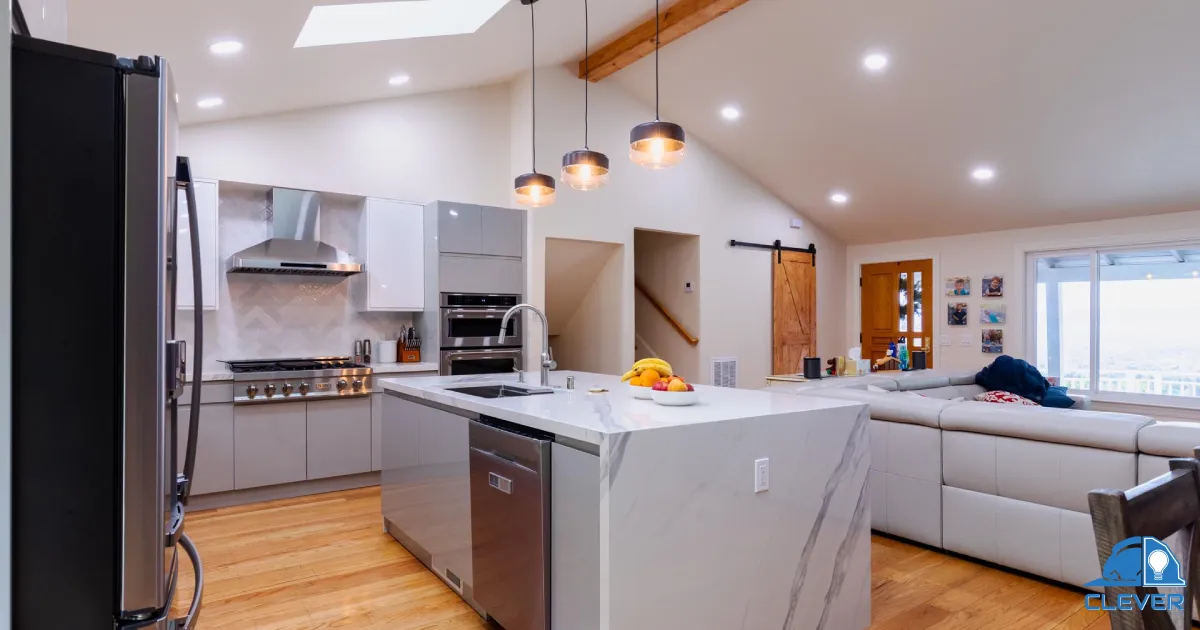
Kitchen Remodeling Costs in Different Bay Area Cities
The Bay Area is very diverse, and if you are privileged to live here, you know that no two neighborhoods, let alone cities, are alike.
The same holds true for the costs associated with hiring contractors and remodeling costs in each city.
Here is a breakdown of the costs you can expect to incur in some of the largest cities in Southern California:
San Francisco Kitchen Remodel Costs
A San Francisco kitchen remodel costs $49,000 to $70,000 for a high-end reno, $35,000 to $52,000 for a mid-range project, and $18,000 to $26,000 for a budget renovation.
A report from 2023 found that the average cost to hire a contractor in the city is much higher than in surrounding communities, so you might pay upwards of $175 per hour for the top contractors.
San Jose Kitchen Remodel Costs
A basic remodel in San Jose, CA, which includes paint, updated countertops, stock cabinets, and new appliances, costs between $25,000 and $35,000.
High-end remodels typically cost more than $75,000, and expect to adjust your budget based on local material and labor estimates:
- Labor. 20% to 35%
- Cabinets. 30% to 40%
- Countertops 10% to 15%
- Lighting. 5% to 10%
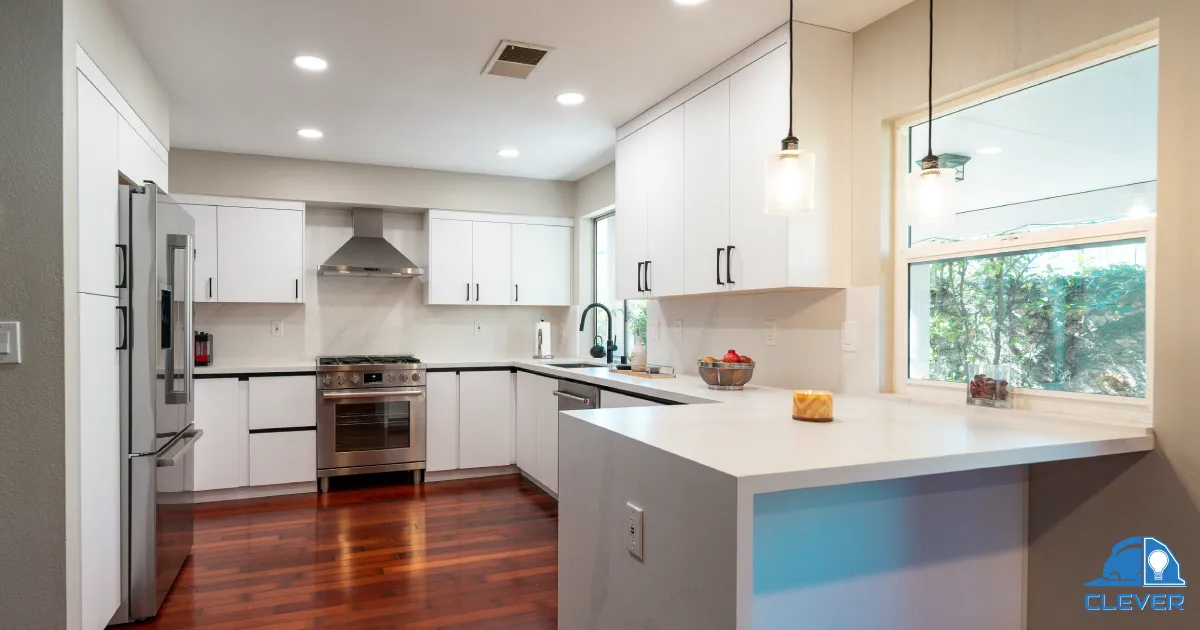
Oakland Kitchen Remodel Costs
Kitchen renovation costs in Oakland, CA, are less expensive than other larger metropolitan areas in the Bay Area.
A high-end kitchen renovation rarely costs six figures, while a mid-range renovation project will cost anywhere from $25,000 to $35,000.
Expect to spend approximately $4,300 for cabinets, $1,500 for counters, and around $1,000 for lighting for a more budget-friendly project.
Palo Alto & Silicon Valley Remodel Costs
The average home price in Palo Alto and throughout Silicon Valley is in excess of $3 million!
It would only make sense that the average cost of a kitchen remodel in the area would be much higher than in surrounding towns, $ San Francisco.
A mid-range kitchen renovation in Silicon Valley can easily cost between $75,000 and $100,000, and don’t be surprised to spend in excess of $150,000 for a high-end kitchen reno!
Marin County & North Bay Remodel Costs
The average home costs in Marin County ($1.4 million) are approximately three times those in North Bay ($450,000), so expect to pay far more for kitchen reno costs in Marin County.
Kitchen remodeling prices in Marin County should align with those in San Francisco, with high-end renovation costs in excess of $100,000.
Mid-range renovation costs in North Bay are between $25,000 and $35,000, and the expectation is to pay around $15,000 for a budget-friendly kitchen remodel.
East Bay vs. South Bay Kitchen Remodeling Prices
The average home prices in East Bay, including Oakland, Hayward, Freemont, and Vallejo, are lower than the cost of housing in the South Bay, which encompasses Redondo Beach, Lawndale, and El Segundo.
If you live in the South Bay area, expect to spend more on every aspect of your renovation than cities in the East Bay area of San Francisco.
South Bay prices are in line with San Francisco, while the prices in South Bay are similar to those in North Bay.
How to Budget for Your Kitchen Remodel
Now that you have a better understanding of how much your Bay Area renovation might cost, it’s time to get down to business and actually create a budget.
Remember, this budget isn’t always set in stone, and you will encounter unexpected expenses, savings, delays, and other alterations.
However, formulating a realistic, flexible budget is one of your most important steps.
Creating a Realistic Budget
You’re ready to work with Expert Kitchen Remodelers in Hillsborough, CA, and your first assignment is to sit down on your own or with a project manager to create a realistic, detailed budget for your renovation.
Managing your money and ensuring you spend every renovation dollar wisely might seem like a Herculean task, but if you keep these easy tips in mind, you will find that formulating and sticking to your budget is doable:
How to Get the Best Value for Your Money
Investing money in your kitchen is about increasing the space’s look and functionality and ensuring the most significant return on investment (ROI) possible.
The following tips will not only help you save money on your renovation but will also ensure you get the best ROI for your investment:
- Invest in energy-efficient appliances
- Refacing cabinets can help you save while increasing your home’s value
- Install a new backsplash
- Upgrade your lighting
Setting Aside a Contingency Fund
Your contractor and project manager’s goal is to help you stay on budget while avoiding costly mistakes, but accidents and setbacks are almost always inevitable.
Put aside roughly 5% to 8% of your renovation budget for unanticipated issues, such as:
- Electrical upgrades
- Outdated plumbing
- Unsafe exposed materials
- Accidents and mistakes

Financing Options for Kitchen Remodeling
Whether you are planning a minor facelift or a massive overhaul, many Bay Area homeowners require additional financial assistance to pay for their dream renovation.
Traditional financing options include:
- Personal loans
- Home equity loans
- Credit cards
- Contractor Financing
- Loan from friends or family
Personal Loans vs. Home Equity Loans
Unsecured personal loans are amongst the most popular options because they are typically more accessible and don’t require you to use your home or other personal belongings as collateral.
However, loan amounts and interest rates are subject to credit approval, meaning you might wind up with a high interest rate if your credit isn’t perfect.
A home equity, or HELOC, loan lets you borrow against your home’s equity.
A HELOC loan or line of credit typically features a lower interest rate, but because you are using your home as collateral, you are at risk of foreclosure if you miss payments.
Using Credit Cards for Renovations – Is It Worth It?
Handing over your credit card to the contractor, home improvement store, or wholesale supplier is much easier than dealing with the hassle of personal loan applications.
But is paying for renovations with a credit card the best option?
The answer is “it depends” because if you are paying for a few minor expenses, the high interest rates won’t be an issue.
However, don’t rely on credit cards to fund the entire renovation, as you will be paying an average of 28.9% in interest rates.
Cost-Saving Tips Without Compromising Quality
The goal of any successful kitchen renovation is to cut costs without compromising quality.
These two outcomes might seem opposite in nature, but it is possible.
Just follow these great tips to help you save real money while creating a beautiful space:
Where to Find Affordable Materials
The Bay Area has some of the highest renovation material costs in the state and the country, but that doesn’t mean you can’t find a great deal.
Check out these options to find inexpensive materials:
- Material overstock
- Big box, hardware, and home improvement clearance sections
- Wholesale material suppliers
- Online marketplaces
Choosing Budget-Friendly Design Alternatives
Creating a breathtaking kitchen doesn’t need to drain your bank account or put you into serious financial debt.
Get creative and decide where to splurge, where to save, and where to repurpose or reuse available materials.
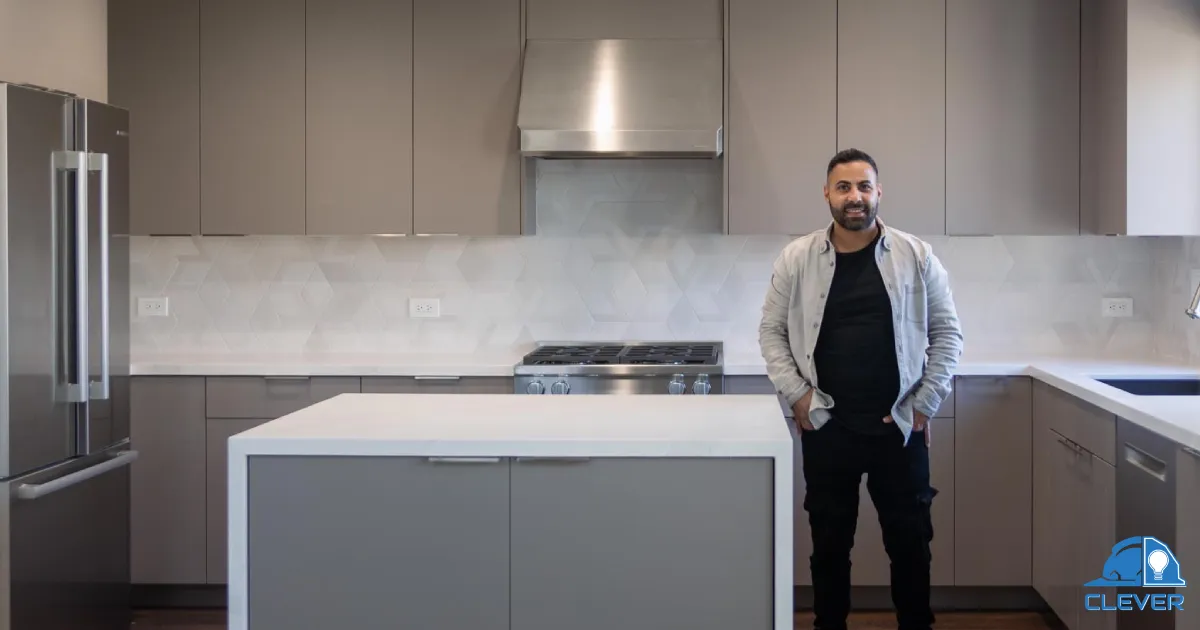
When to Splurge and When to Save
It’s an age-old question all homeowners ask themselves at the beginning of their kitchen renovation project: What can I live without, where do I want to save money, and where should I invest according to my budget?
Splurge on:
- Kitchen cabinets
- Kitchen Countertops
- Upgrading appliances
Save on:
- Flooring
- Lighting
- Hardware and faucets
Reuse and Repurpose – Cost-Effective Ideas
A kitchen renovation creates a lot of waste, from ripping out the cabinets and flooring to replacing plumbing and hardware.
The best way to reduce waste and save money is to get creative with the materials available in your kitchen.
Here are a few fun ways you can reuse and repurpose your old kitchen materials to make your new kitchen shine:
- Repaint or refacing cabinets can save money, but make sure the cabinets are in good shape and the style is compatible with your new design.
- Repair and reuse existing appliances
- Refinish existing hardwood floors
- Repurpose design elements from the rest of the home in the kitchen
Kitchen Remodel Return on Investment (ROI)
In the home improvement industry, the return on investment, or ROI, refers to the amount of money you spend compared to how much you can recoup if you sell your home.
Ideally, you want to get the highest ROI possible, but several factors will impact this percentage, including:
- Quality of materials
- Market conditions
- The size and scope of your SF kitchen remodeling project
How a Remodel Impacts Your Home’s Value
Did you know that a new deck, bathroom renovation, replacing your siding, and even upgrading your front door or garage door have some of the highest ROIs?
The right renovation project can have a very positive impact on your home’s value, especially when those renovations improve curb appeal and focus on critical areas of the home, including the kitchen and bathroom.
Focus on renovations that improve your home’s functionality and align with current design trends to ensure you achieve a positive ROI.
Comparing ROI for Different Remodel Budgets
The Bay Area has a very competitive real estate market, and most home buyers purchase properties with updated kitchens.
Your remodel’s scope and budget will impact the ROI, and you will soon learn that spending more doesn’t always give you the best return:
- Minor kitchen remodel ROI: 81.8%
- Mid-range kitchen remodel ROI: 59%
- High-end kitchen remodel ROI: 53.5%
To maximize your kitchen’s ROI, focus on:
- High-impact upgrades, such as updating counters and cabinets
- Focus on the potential buyer’s interests
- Work with a reputable remodeling company
What Buyers Look for in a Kitchen Upgrade
Purple has always been your favorite color, and you love the idea of butcher block countertops, but will these design choices align with the popular opinions of Bay Area home buyers?
Consider incorporating these upgrades into your design plan if you are considering selling your home or want to appeal to most Bay Area buyers:
- Sustainable materials and features
- High-end natural stone countertops
- An open layout
- Top-of-the-line appliances
- Natural light
Resale Value vs. Personal Enjoyment – Finding the Balance
Many Bay Area homeowners feel pressured to focus on ROI and resale value rather than prioritizing personalization.
Design trends are constantly changing, meaning that a particular style that is hot today will look outdated in several years.
The key is to find a balance between updates that offer a great ROI and adding personal touches that make your kitchen feel like home.
For example, one of the best ways to personalize your kitchen is through finishing touches, such as hardware and artwork that can inexpensively be changed if you decide to sell your home.
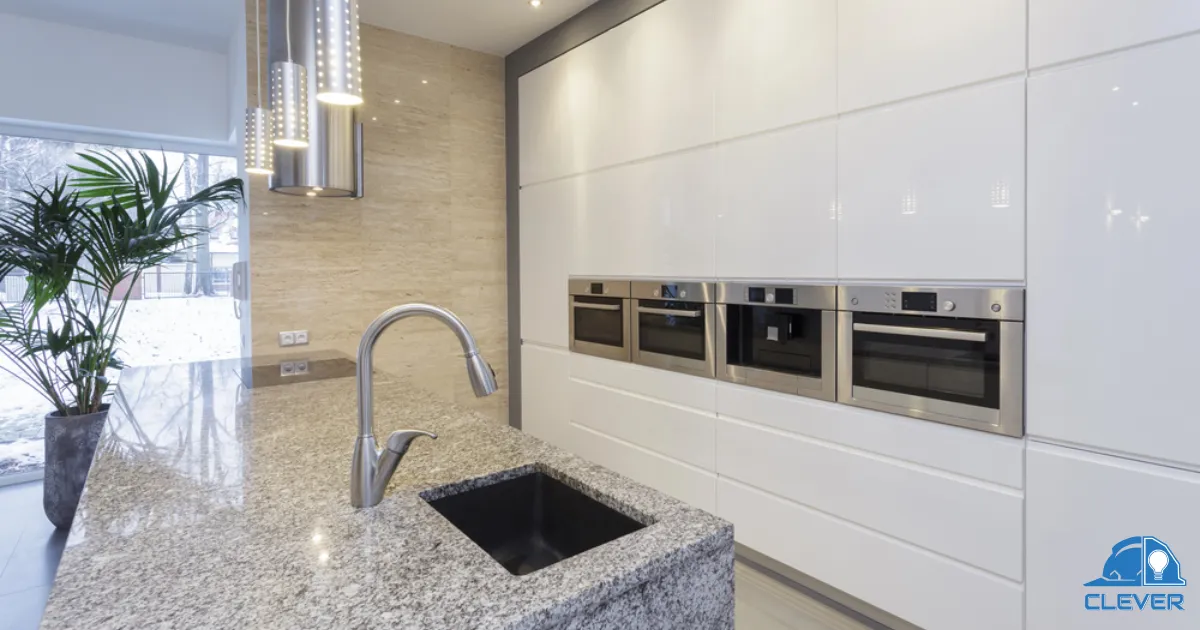
Kitchen Remodeling Trends in the Bay Area
The San Francisco Bay Area is definitely known for its historic homes, progressive attitude, deep emotional connection to nature, and, in recent years, progress, thanks to Silicon Valley.
With such a diverse population, you might be surprised that there are some things that Bay Area residents can agree on—popular kitchen design trends!
Let’s focus on some significant design trends and popular styles to help you understand the tastes and preferences of Bay Area homebuyers:
Popular Design Styles and Their Costs
You have a particular vision for your kitchen and have been dreaming of transforming your space into a beautiful, functional oasis.
Several popular design styles have dominated the Bay Area market over the last few years, which is not expected to change any time soon.
Here are a few of the most well-loved aesthetics and how adopting each will impact your renovation budget:
Modern Minimalist Kitchens
Minimalist or modern kitchens focus on sleek lines, simplicity, functionality, and the removal of excess adornment and clutter.
Focus on sleek cabinetry, muted tones, open counters, a large kitchen island, and multi-functional appliances, which will reduce unnecessary chaos.
The cost of a minimalist makeover varies depending on the kitchen’s size.
For example, a budget-friendly modern kitchen renovation typically costs between $15,000 and $25,000, while a high-end remodel can cost in excess of $75,000.
Farmhouse & Rustic Style Kitchens
Rustic or farmhouse kitchens focus less on functionality and more on creating a warm, welcoming environment perfect for families.
Elements of both design styles include:
- A large, deep farmhouse sink
- Orante or shaker-style cabinets
- Butcherblock or natural stone counters
- Hardwood or vinyl plank flooring
- A neutral color palette featuring gray, white, and beige with muted accent colors
The cost of a rustic or farmhouse makeover is comparable to that of any typical renovation project, so expect to pay anywhere from $15,000 for a budget-friendly renovation to more than $100,000 for a renovation with all the bells and whistles.
Open-Concept vs. Traditional Kitchens
The main difference between a traditional and open-concept kitchen is literally walls!
An open floorplan kitchen removes walls between the kitchen and the rest of the living space.
Traditional kitchens have walls or partitions that separate the kitchen from the living room or other areas.
If you maintain your traditional kitchen, you will not need to spend any additional money on demolition or wall removal.
The cost of removing a wall to transition into an open-concept kitchen varies greatly depending on whether the wall is load-bearing.
Sustainable and Eco-Friendly Kitchen Remodel Costs
The Bay Area is at the forefront of the sustainable movement, and this fact becomes evident when planning a modern kitchen renovation project.
Incorporating sustainable elements into your kitchen is good for Mother Earth, and it can also save you money on energy costs while increasing your Bay Area home’s value.
Green Materials and Energy-Efficient Upgrades
Sustainable building practices are very popular in the Bay Area, and implementing eco-conscious materials and upgrades is paramount to the health and efficiency of your home.
Here are some popular green materials and energy-efficient upgrades that you should integrate into your Bay Area kitchen remodel:
- Bamboo or cork flooring. Both of these sustainable products cost between $5 and $16/square foot for materials and installation.
- Reclaimed wood. From floors and shelving to countertops and even ceilings, reclaimed, recycled wood is a beautiful option that will cost $10-$20 per board.
- Energy-efficient appliances. A smart investment, ENERGY STAR-certified appliances cost between $500 and $3,000 in the San Francisco area.
Common Kitchen Remodel Mistakes to Avoid
You’ve planned for every incidental, have an air-tight budget, and are confident that your kitchen renovation project will be perfect.
Unfortunately, even the best-laid plans seem to fail, and this holds true for almost every kitchen renovation.
The best thing you can do is learn about some of the most common kitchen renovation mistakes and how you can avoid them:
Overspending on Non-Essential Upgrades
One of the most common and avoidable mistakes is splurging on needless upgrades that don’t increase your kitchen’s functionality or home’s value.
As a rule, focus the majority of your kitchen renovation budget on the big three essentials:
- Cabinets
- Countertops
- Flooring
Save money on small kitchen appliances, decorative items, and single-use items.
Not Planning for Unexpected Costs
Remember to set aside at least 5% to 8% for incidentals, accidents, and other unsuspected costs.
This budget will cover any unexpected plumbing disasters, electrical deficiencies that arise when you move a wall, or unanticipated building permit expenses.
Hiring the Wrong Contractor
The majority of Bay Area contractors are established, reputable individuals who will make your renovation a top priority.
Unfortunately, there are disreputable contractors who are looking to make a quick buck, and learning how to spot them will help you avoid unexpected expenses.
Follow these tips to find a great contractor:
- Obtain at least three to four written estimates
- Do your homework and research potential contractors
- Ask friends and family for recommendations
Ignoring Permits and Local Regulations
Obtaining permits might be a hassle, but it is the law and your city or municipality’s way of ensuring any updates are legal and safe.
Failing to obtain the correct permits in a timely manner can not only delay your project, you can also be subject to fines, depending on where you live.
For example, in San Francisco, if you do not obtain the proper permits, you could face a variety of penalties, including:
- Nine times the cost of the original permit
- You might be required to rip out any existing work and start from scratch
- An additional non-compliance fee
- Late fees and other penalties
Failing to Optimize Kitchen Workflow & Storage
Creating an efficient workflow is the key to saving time and ensuring your kitchen is as functional as possible.
Follow these simple to maximize kitchen workflow and effectively increase storage:
- Designate clear work zones
- Keep frequently used items in reach
- Utilize the room’s vertical space
- Organize and label cabinets
- Get rid of unnecessary clutter
If you want to learn more, check out Avoid Top 10 Palo Alto Kitchen Remodel Errors!
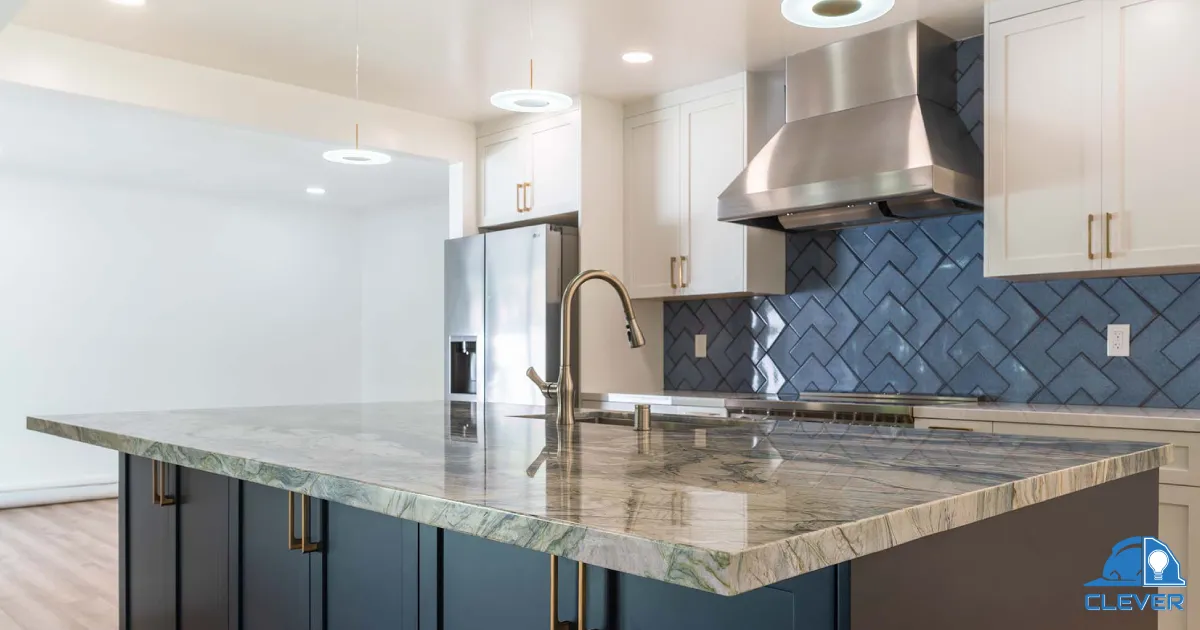
Conclusion – Is a Kitchen Remodel Worth It in the Bay Area?
Congratulations!
You are a kitchen renovation expert who is ready to get started, but is it worth all the time, expense, and hassle to create your dream kitchen?
The answer is “absolutely,” but only if you have a set goal and work with the best kitchen remodeling team in the Bay Area, Clever Design & Remodeling.
Take advantage of our years of experience, attention to detail, and unmatched customer service.
Summary of Key Takeaways
The average cost of a kitchen remodel in the SF Bay Area depends on several factors, including your location and the size and scope of the project.
The average budget-friendly renovation will cost between $15,000 to $30,000, while a mid-range will cost $30,000 to $60,000, and you can easily pay over $100,000 for a high-end renovation.
Splurge on cabinets and countertops and save on flooring, fixtures, and finishing touches.
Always obtain the necessary permits, and most importantly, do your homework to ensure you work with a great construction company and that your project remains on budget.
Final Budgeting and Planning Tips
Budgeting and planning are the first steps to any successful kitchen renovation.
Here are some final helpful tips to keep in mind:
- Remain flexible and remember your initial budget might change
- Make a design decision and stick with it
- Listen to your project manager – They are trained, knowledgeable, and ready to help
- Wait for the late fall or winter to start your project
- Don’t rush the budget and planning process
Next Steps for Homeowners Ready to Remodel
Are you up to the challenge of reinventing your kitchen but aren’t sure where to start?
Flipping through design magazines or creating a Pinterest board can help you find inspiration, but when you are ready to truly understand the average cost of a beautiful kitchen remodel in the Bay Area, contact the amazing team at Clever Design & Remodeling.
Our staff of seasoned, talented experts is ready and waiting to help you design and realize your dream kitchen, whether you are planning a simple facelift or want to rip out every wall, countertop, and cabinet and start from scratch.


